

presents
Asian American Arts Centre presents
Rare Tribal Textiles From China
Tribal costume is a history book illustrating rich cultural and religious records of ethnic people in China, and carrying the clearest insignia for each ethnic group and it is not only part of history, but remains part of contemporary modern life.
Embroidery
Embroidery is the most popular embellishment of ethnic costumes, for example, Miao embroidery art in Guizhou, China carries stories including the origin of the clan, the glorious time of the ancestry and dreams
for the future. The patterns and motifs in Miao embroidery are closely connected with totem worship in ancient times. Various figures such as floating clouds, flying birds, wild animals, flowers, human beings
and deities, even ghosts and monsters are commonly integrated in a piece of Miao embroidery. Embroidery is made by chemically or naturally colored silk threads.? The textile work of various ethnic groups
in Southwestern China is their major art form. They have taken this art form to the highest level, creating not only a series of amazingly intricate stitches but using these in many different combinations
on the same piece of work to produce highly sophisticated compositions of color texture and form.
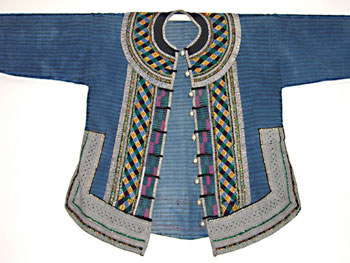
La-Ran (wax-resist dyeing)
La-ran (wax-resist dyeing) is a traditional batik art in China that can be traced back to the Western Han Dynasty (206 BC-24 AD). Batik used to be popular both in Central and Southwest China.
Somehow the batik technique was lost in Central China, but it has been handed down from generation to generation among the ethnic people including Miao, Yao, Dong, Zhuang, Buyi, and various Yi
groups living in Southwestern China. Traditional bee wax mixed with mineral colors drawn with a copper blade attached on a bamboo stick (La-dao) on hand woven cotton fabric.? Wax resist dye is
applied using traditional natural color including vegetable indigo, locally hand-woven cotton fabric beaten or pressed after having been dyed in indigo and humidified then, covered with water
buffalo's or pig's blood, egg white or a glue extracted from boiled buffalo skin, and dried in the sun, which makes it black leather look texture
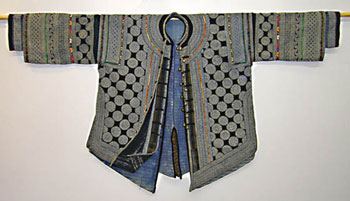
Batik is a dyeing and printing technique, combining wax painting with dyeing. Patterns are painted with melted bee wax on textiles and then dyed. The bees-wax is eliminated with hot water and after rinsing, the beautiful designs of the waxed areas are revealed.? Batik patterns mainly are geometric patterns and birds and flowers designs.? The traditional colors are blue and white. Batik is very popular in Guizhou, Yunnan, and Guangxi Provinces and its design style varies among different ethnic groups and in different areas. Huangping, Danzhai and Anshun are among those places which have won the reputation of the Homes of Traditional Batik in China.
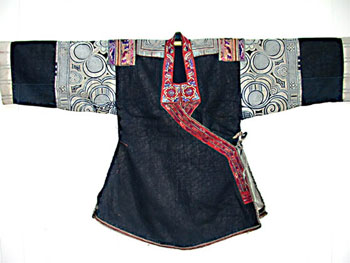
Batik work embellishes women's costume and is often used on both skirts and jackets.? Many ethnic groups throughout Southwestern China also produce batik and as the designs are very individual, they can be used to identify specific villages or areas. Ethnic elaborative costumes (jackets, dresses, skirts, etc.) are used for traditional festivals, wedding, and ceremonies in local areas. Banners are carried by men in local festivals. Baby carriers are traditionally widely used in daily life.
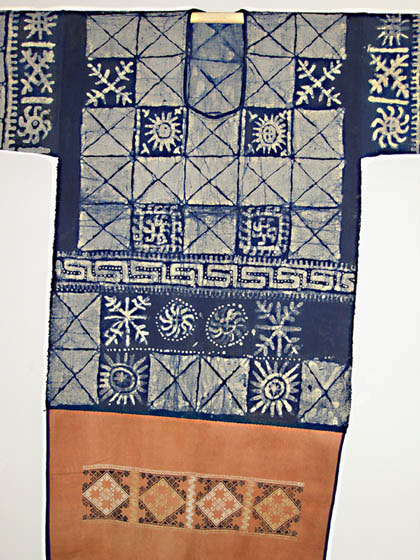
Richly woven and traditionally dyed and embroidered textiles are considered the major living visual art form of ethnic cultures.? This not only identified them as belonging to a specific group but was also an indicator of family wealth. They are also considered the most important material expression of ethnic culture.? In addition, rich symbolism is found in most Miao textiles telling the story of the Miao migration, representing their creation myths and their heroes and echoing their animistic beliefs. It has been a tradition that for Miao women to wear the distinctive style and colors of their own village culture.? A woman will aim to distinguish herself by the beauty and the fineness of her garment decoration to demonstrate her talent and abundant skill on the loom. Symbols and colors shown in the elaborated textiles are also a way to bring fertility, health and prosperity.? It can also be a way to protect the women and her child against evil forces. Most of the techniques (wax painting, wax resist dyed and embroidered textiles) employed to make these art works are inherited within a family or developed by local ethnic people for generations.
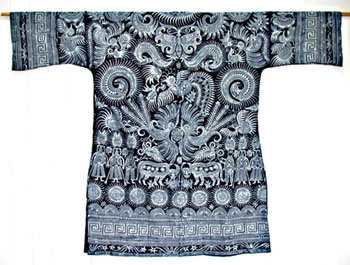
By: Dr. Andrew Wang
Dr. Andrew Wang spent his childhood in southeast China living with people of various ethnic minority groups including Miao, Yao, Zhuang, Dong, Shui, and other ethnic groups. Dr. Wang was a professional
fine art artist before his medical career and has been actively involved in traditional ethnic folk art preservation, promotion and collection since the early 1990's. Recently, Dr. Wang has
served as an international volunteer advisor and a liaison for several ethnic art museums located in China.
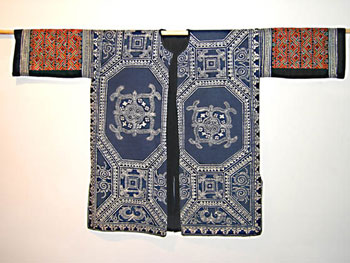
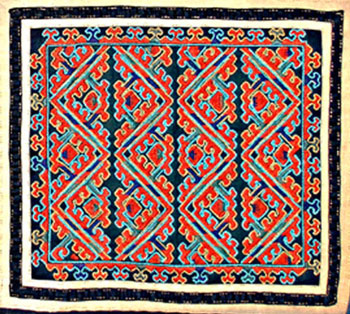
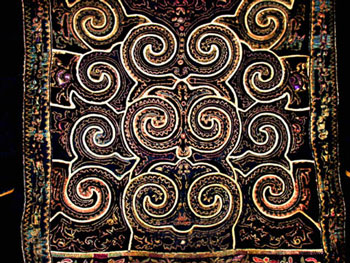
[ close window ]